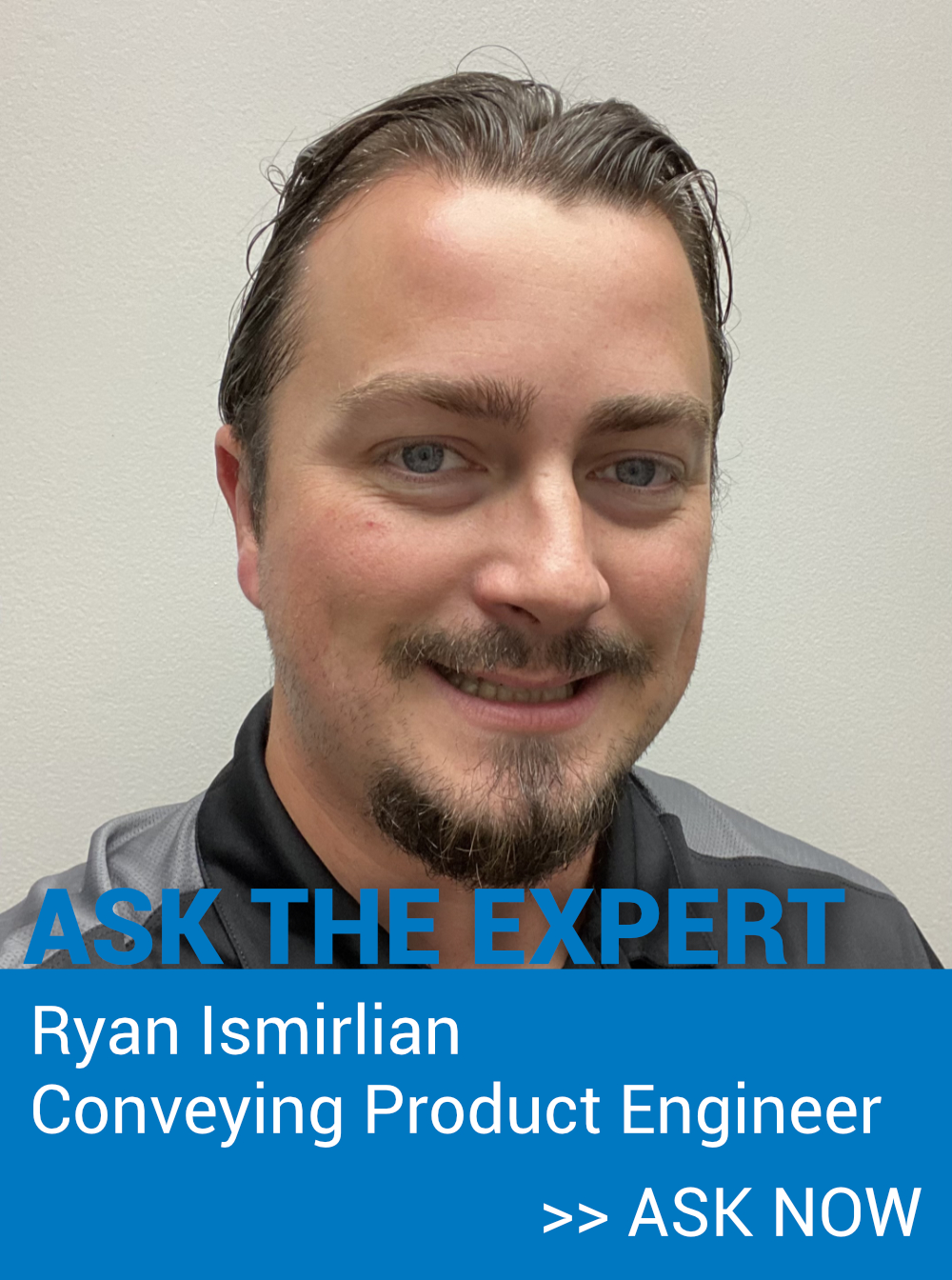Overcoming Long Conveying Distances
What if you could extend an existing resin conveying system without changing the piping, increasing the number of pumps, or greatly affecting operating costs and energy consumption? Replacing the conveying system’s vacuum pump may be the key.
Jim Zinski, Senior Vice President of System Design, NOVATEC
Air and vacuum work together to make everything happen in a resin conveying system. Airflow creates the velocity to pick up and move the resin through the pipes. Vacuum energy overcomes the resistance air and material encounter as they move through the pipes. The conveying system’s “engine” is the pump, which is the source for blow airflow and vacuum.
This is why vacuum pump selection is crucial for maximizing the efficiency of any resin conveying system, and for minimizing line plugs and machine starving. Pump selection is also crucial when expanding an existing conveying system, that is, when adding stations and increasing conveying distances—without having to rip-and-replace the existing system, add excessive capital costs and maintenance, and suffer major interruptions to existing production.
Air is Key
Vacuum conveying systems use air to pull resin materials through a pipe or tube. Pumps generate air flow to pick up and move resin through the piping of a conveying system. This air flow is typically defined in units of cubic feet per minute (cfm). Dividing this air flow by the cross-sectional area of the tube yields velocity in feet per minute, fpm. The higher the air flow in a pipe, the higher the air velocity. Too much velocity for moving resin can waste some of the pump’s available vacuum energy, as well as the electricity to power the pump. Excessive velocity also leads to a variety of operational inefficiencies, including material degradation and contamination, pipe and elbow abrasion, additional maintenance and replacement costs, and shortened lifetime for the conveying system.A conveying system’s pump must also overcome the resistance generated by moving both air and material through the piping. This resistance is pressure drop, which defines the energy needed to move air and material from a source to a destination. Pressure drop is defined by the unit inches of mercury (“Hg). In general, pressure drop increases as piping lengths or the number of elbows in the system increase, or both. Pressure drop also increases when adding more material to the air stream; more material adds more friction, causing the pump to work harder to accelerate that additional material.
The minimum pickup velocity for many resins is about 3,000 fpm. In a 2-inch diameter system, this velocity requires an air flow of about 60 cfm. That air traveling through the conveying line—by itself and without material mixed in—creates a pressure drop of about 0.75”Hg per 100’. So over a 400-foot length of 2-inch diameter tubing, the pressure drop would be about 3”Hg—just to move the air. So the pump vacuum available to move material in that setup is reduced 3”Hg.
Pump Types
Several types of vacuum pumps can move air in a resin conveying system (see Table 1). Single-stage regenerative pumps are the smallest, quietest, and least expensive. They also have the lowest vacuum capacity (about 6-9”Hg maximum depending on tube diameter). These pumps are ideal for conveying light loads across short distances in systems with up to about 2.5-inch diameter tube.
Two-stage regenerative pumps are similar, but physically larger, than single-stage regenerative pumps. They use more horsepower than the single-stage pumps to create higher vacuums, up to 12”Hg. These pumps are best suited for conveying materials across moderate distances at moderate rates, with tubing diameters up to 2.5” diameter.
Positive displacement (PD) pumps, considered by many the industry standard, provide the widest range of airflow (e.g., 55 to 470 cfm) and vacuum levels up to 14”Hg. These pumps are often installed for conveying resins across long distances in systems with tubing up to 4” diameter. Two-stage regenerative pumps are quieter and more compact than PD pumps, but the latter are more efficient.
Two types of high-efficiency vacuum pumps produce up to 25% more vacuum capacity than standard PD pumps. Higher vacuum yields higher conveying rates and longer distances. Max-efficiency PD pumps produce operating vacuums up to 14”Hg (maximum vacuum up to 15”Hg) through a rugged design that includes a heavy-duty roller bearing, helical gears, a tri-lobe rotor, with models ranging from 5 hp to 20 hp. These pumps are more energy efficient than regenerative pumps and quieter than PD pumps.
Another high-efficiency pump option is the hooked-rotor vacuum pump (also called “hook & claw” or “claw-type” pump). The claw design compresses air while it’s inside the pump housing, increasing the operating vacuum for conveying up to 15”Hg (17”Hg maximum vacuum). These pumps come in models ranging from 4 hp to 15 hp, and they are extremely energy efficient, requiring nearly half the energy of regenerative pumps and up to 25% less energy than standard PD pumps for a given vacuum and airflow target. They are also quieter than PD pumps in comparable vacuum ranges. Claw pumps provide the higher conveying rates and plug-breaking capability than any other pump. However, the high relative cost of these pumps (Table 1) generally limits their use except for unusual conditions that can’t be overcome by other pumps.
Realizing that operating vacuum and maximum vacuum are different is important. Operating vacuum is the maximum vacuum a conveying system should pull during normal operation, and it’s the basis for calculating the system’s maximum conveying rate. Designing a conveying system to the pump’s maximum vacuum leaves no “wiggle room.” A dirty filter, for example, can cause the system to exceed maximum vacuum capacity and possibly open a relief valve, which will effectively slow or stop material movement. Designing to the operating vacuum also saves some extra vacuum in reserve to clear an overfed conveying line of material slugs.
Pumps for system expansion
Consider a conveying system with 2-inch diameter piping, several elbows, and stations amounting to 400’ of equivalent conveying distance. (See Equivalent Distance Chart) A single-stage pump would generate an operating design vacuum of 6.5”Hg; a 2-stage pump, 10.5” of Hg; a PD pump, 11.5” of Hg (see Table 2).
As noted earlier, the pressure drop for air pulled through this system setup, having a pickup velocity of 3,000 fpm, is 3”Hg. Because the PD pump is typically belt driven, it can be designed to rotate at the rpm required to deliver that performance. Because Regen pumps are direct drive, they operate at a fixed speed, and normally create a pickup velocity of 4,000 fpm or more. More air speed at the pickup creates more system resistance to air movement, resulting in 4”Hg pressure drop for the same installation.
Comparing operating vacuum and system air pressure drop, we see the three pumps are very different in terms of vacuum available for moving materials. For the single-stage pump, 2.5”Hg is available; the 2-stage pump, 6.5”Hg; and for the PD pump, 8.5”Hg is available—more than triple the capacity of the single-stage pump. This excess vacuum helps deliver more conveying rate to accommodate the added stations, and overcome longer distances typically required when adding stations. Replacing a pump with model that can generate more usable vacuum at the required airflow may obviate the need to rip out all the conveying lines and install a new system.
Consider a continuation of this example. Say the heretofore 400-foot system is lengthened, more elbows are added along with some flexible hose, and the vacuum pump has been repositioned closer to the resin pickup point, thereby lengthening the vacuum line. This expansion has more than doubled the length than the previous example to 1,000’ (equivalent). The pressure drop required is now 9”Hg. While the design vacuum of the three pumps stays the same, the available vacuum for conveying is smaller (see Table 3). The single-stage pump won’t work at all in the extended system. The dual-stage and standard PD pumps will suffice—barely, with little extra vacuum for clearing out the pipelines or future expansion.
Here now are the options. The simple solution is to replace the existing vacuum pump with one that provides more vacuum (i.e., increased capacity) if that is at all possible. For instance, a PD pump is a simple plug-and-play replacement for a single-stage regenerative pump. With an existing PD pump, you could change the sheaves to change the pump’s speed. Because pump speed is proportional to the amount of airflow generated, faster pump speed will yield greater airflow. However, that can lead to material degradation and piping wear. This change will also increase the pressure drop in the conveying system, as well as the pump’s energy consumption.
A more-expensive option is to convey material in two stages through the extended system. However, adding a second pump also requires a new central filter, new vacuum line and pickup, and possibly a control system, as well as all the associated costs in capital expense, reliability, and ongoing maintenance. Another option is to rip out all the conveying line and replace it with 2.5” or 3” diameter piping—with a new pump. This is the most expensive option.
Probably the best option—faster to install, less disruptive, least expensive in terms of operating costs, and one that ensures against in-line plugs, starving machines, and other conveying problems—is to replace the existing regenerative or PD pump with a high-efficiency pump. The latter will have the higher vacuum required to convey the extra distance and carry the extra material.
What to do?
Selecting the correct pump for resin conveying is crucial in maximizing machine uptime, minimizing machine starving, reducing material and labor costs, and improving product quality and overall plant efficiency. Just as important, the correct pump can be the very key to extending an existing conveying system at minimal cost and downtime, while maximizing the efficiency of the conveying system.
Table 1
Typical Vacuum Capability of Conveying System Pumps
|
Pump |
Typical Line Sizes |
Operating Vacuum |
Maximum Vacuum |
Relative Cost |
|
Single-Stage Regenerative |
1½”- 2½” |
6.5”- 8.5” Hg |
10” Hg |
$ |
|
Dual-Stage Regenerative |
1½”- 2½” |
10”- 11” Hg |
12” Hg |
1.5 $ |
|
Positive Displacement (PD) |
1½”- 4”` |
11" - 12” Hg |
13” Hg |
1.5-2 $ |
|
Maximum Efficiency PD |
2”- 3½” |
13” - 14” Hg |
15” Hg |
$$ |
|
Ultra-High Efficiency Hooked Rotor |
2”- 3” |
14” - 15” Hg |
17” Hg |
$$$ |
Table 2
Typical 2" System Conveying 400’ (equivalent)
|
Pump |
Design Vacuum |
Air Pressure Drop |
Available Vacuum |
|
Single-Stage Regenerative |
6.5” Hg |
4” Hg |
2.5” Hg |
|
Dual-Stage Regenerative |
10.5” Hg |
4” Hg |
6.5” Hg |
|
Positive Displacement |
11.5” Hg |
3” Hg |
8.5” Hg |
Table 3
Typical 2” Extended System Conveying 1,000’ (equivalent)
|
Pump |
Design Vacuum |
Air Pressure Drop |
Available Vacuum |
|
Single-Stage Regenerative |
6.5” Hg |
10” Hg |
0” Hg |
|
Dual-Stage Regenerative |
10.5” Hg |
10” Hg |
0.5’ Hg |
|
Positive Displacement (PD) |
11.5” Hg |
9” Hg |
2.5” Hg |
|
Maximum Efficiency PD |
14” Hg |
10” Hg |
4” Hg |
|
Ultra-High Efficiency Hooked Rotor |
15” Hg |
10” Hg |
5” Hg |



